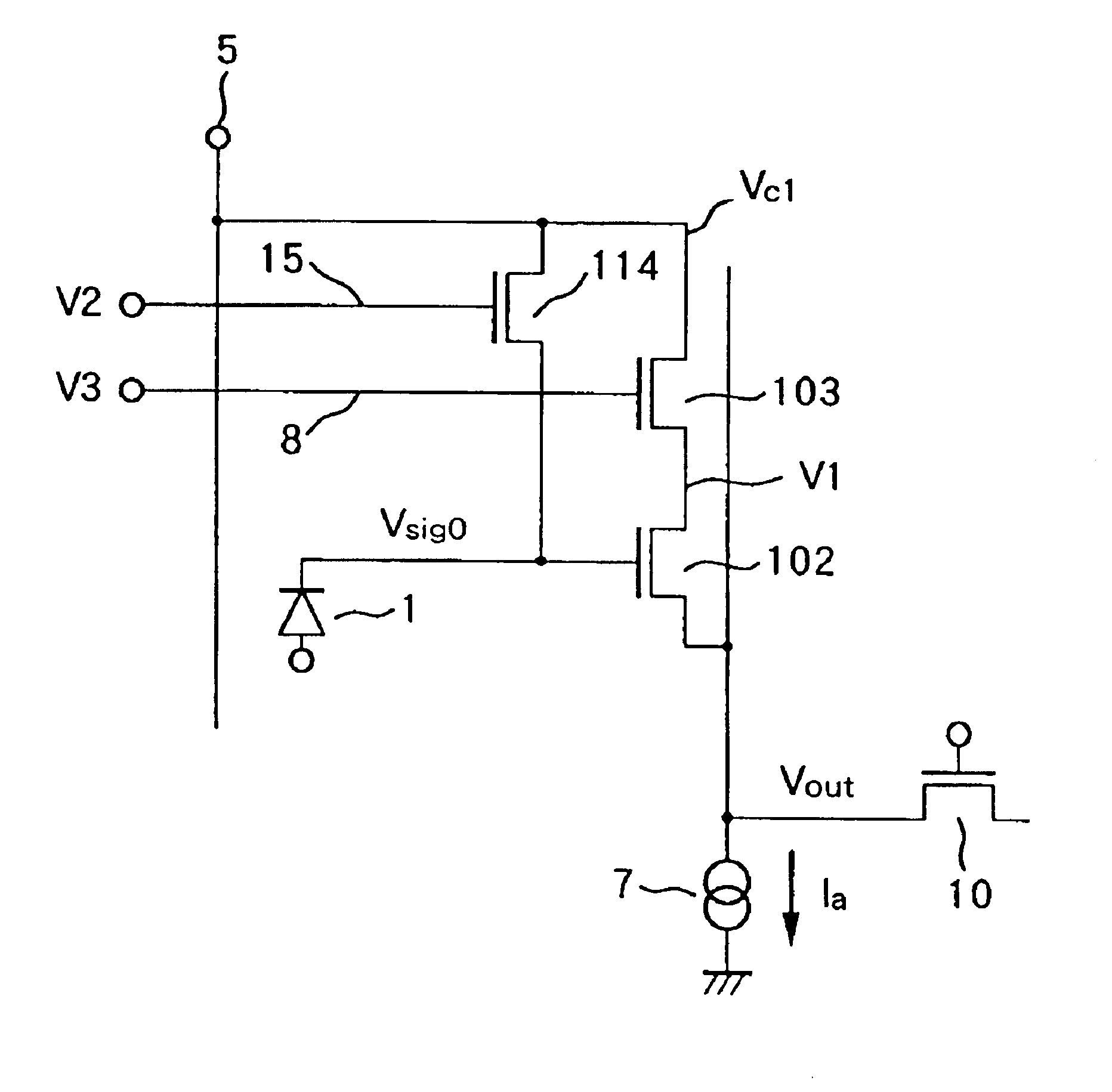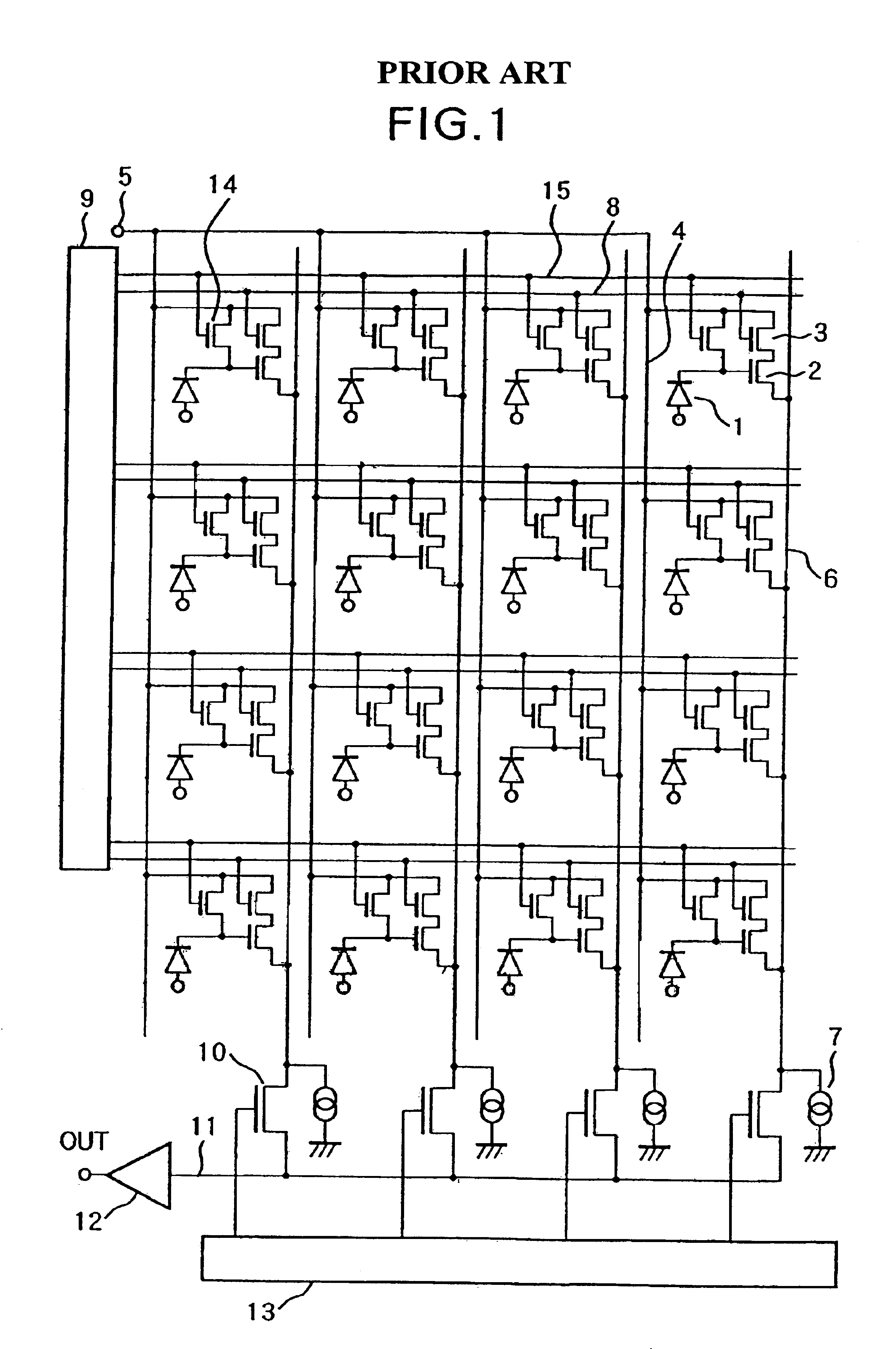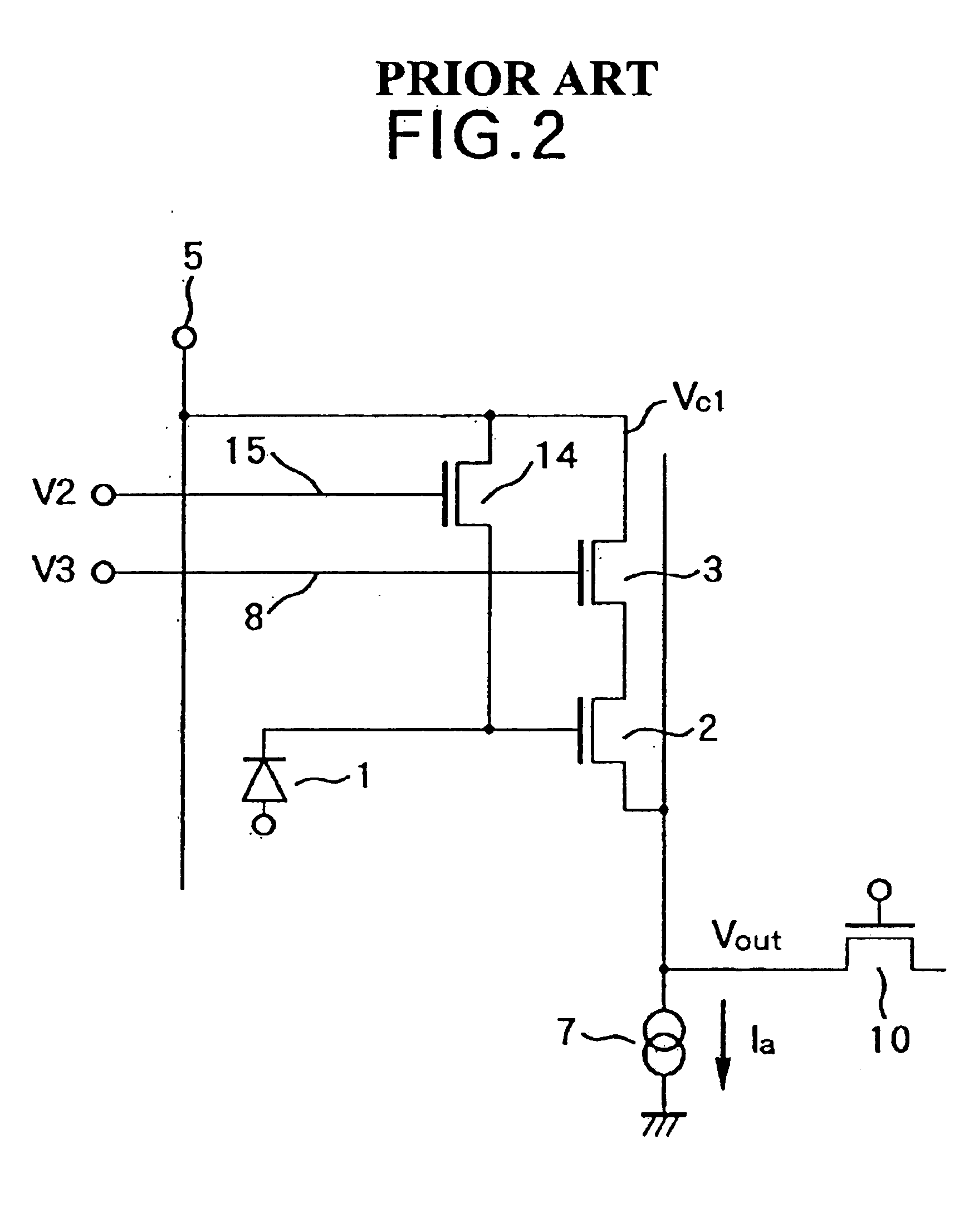Image sensing device using MOS type image sensing elements
a technology of image sensing and image sensing elements, which is applied in the direction of radio frequency control devices, instruments, television systems, etc., can solve the problems of mos type photoelectric conversion devices providing inferior images, affecting the linearity of input-output, and consuming a large amount of time to charge a capacitance with a small current, etc., to achieve good input-output linearity
- Summary
- Abstract
- Description
- Claims
- Application Information
AI Technical Summary
Benefits of technology
Problems solved by technology
Method used
Image
Examples
first embodiment
[0067]FIG. 6 is a circuit diagram showing one photoelectric conversion element 1 and its peripheral circuit corresponding to a single pixel according to the present invention. In FIG. 6, the MOS transistor 103 which acts as a row selection switch is a field effect transistor (FET). Let the gate voltage of the reset switch 114 when it is on be V2, the gate voltage of the row selection switch 103 when it is on be V3, the drain voltage of the MOS transistor 102 be V1, a threshold voltage of the reset switch 114 be Vth0, a threshold voltage of the row selection switch 103 be Vth1, and a threshold voltage of the MOS transistor 102 be Vth2. Note, the source follower is formed with the MOS transistors 102 and 103 and the constant current source 7.
[0068]As explained in the “Background of the Invention”, when the source follower operates in the linear operation region, the condition of the MOS transistors 103 and 102 to operate in the saturation region,
Vds>Vgs−Vth (1)
[0069]is satisfied...
second embodiment
[0089]In the second embodiment, a case where the MOS transistor 103 has a different threshold voltage from that of transistors 102 and 114 is explained.
[0090]As described in the first embodiment, when the MOS transistors 102, 103 and 104 have an identical threshold voltage, the current allowed to flow through the source follower is limited to a very low value. Therefore, when a higher resolution is demanded and a load that the source follower needs to drive increases, the configuration explained in the first embodiment can not meet the demand.
[0091]However, by setting the threshold voltage of the row selection switch 103 lower than those of the MOS transistors 102 and 114, it is possible to satisfy equation (12), or equation (1), while increasing the current Ia. When the voltages V2 and V3 applied to the gates of the reset switch 114 and the row selection switch 103 are the same (V2=V3), similarly to the first embodiment, by solving the equation (12) for (Ia / K)1 / 2, then the conditio...
fourth embodiment
[0128]As the fourth embodiment, a case where the reset switch 114 operates in the saturation region, and the row selection switch 103 operates in the linear region is explained. In this case, considering that the current flowing through the row selection switch 103 is the same as that flowing through the source follower, the following equation (21) is obtained with reference to FIG. 6.
Ia=K(V3−V1−Vth1)2−K(V3−Vc1−Vth1)2 (20)
[0129]where K=1 / 2×μ×Cox×W / L[0130]μ: Mobility[0131]Cox: Capacitance of gate oxide per unit area[0132]W: Gate width[0133]L: Gate length
[0134]By solving the equation (20) for V1, then
V1=V3−Vth1−(Ia / K+(V3−Vc1−Vth1)2)1 / 2 (21)
is obtained.
[0135]By plugging the equation (21) and the equation (9), shown in the first embodiment, into the equation (1), the condition for the source follower to operate in the linear operation region when the reset voltage Vsig0 is applied to the gate of the MOS transistor 102 is expressed as follows.
V3−Vth1−(Ia / K+(V3−Vc1−Vth1)2)1 / 2>V2−Vth...
PUM
 Login to View More
Login to View More Abstract
Description
Claims
Application Information
 Login to View More
Login to View More - R&D
- Intellectual Property
- Life Sciences
- Materials
- Tech Scout
- Unparalleled Data Quality
- Higher Quality Content
- 60% Fewer Hallucinations
Browse by: Latest US Patents, China's latest patents, Technical Efficacy Thesaurus, Application Domain, Technology Topic, Popular Technical Reports.
© 2025 PatSnap. All rights reserved.Legal|Privacy policy|Modern Slavery Act Transparency Statement|Sitemap|About US| Contact US: help@patsnap.com



